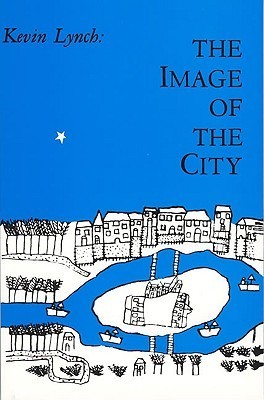What do you think?
Rate this book


208 pages, Paperback
First published January 1, 1960
Looking at cities can give a special pleasure, however commonplace the sight may be. Like a piece of architecture, the city is a construction in space, but one of vast scale, a thing perceived only in the course of long spans of time. City design is therefore a temporal art... At every instant, there is more than the eye can see, more than the ear can hear, a setting or a view waiting to be explored. Nothing is experienced by itself, but always in relation to its surrounding, the sequences of events leading up to it, the memory of past experiences. (1)
Not only is the city an object which is perceived (and perhaps enjoyed) by millions of people of widely diverse class and character, but it is the product of many builders who are consonantly modifying the structure for reasons of their own... No wonder, then, that the art of shaping cities is an art quite separate from architecture or music or literature. (2)
A good environmental image gives its possessor an important sense of emotional security. He can establish an harmonious relationships between himself and the outside world...(4)
a distinctive and legible environment not only offers security but also heightens the potential depth and intensity of human experience. Although life is far from impossible in the visual chaos of the modern city, the same daily action could take on new meaning if carried out in a more vivid setting. (5)
orientation, of never coming out. The surprise must occur in an over-all framework; the confusions must be small regions in a visible whole.... Complete chaos without hint of connection is never pleasurable. (6)
The observer himself should play an active role in perceiving the world and have a creative part in developing his image. He should have the power to change that image to fit changing needs... what we seek is not a final but an open-ended order, capable of continuous further development. (6)
'public images,' the common mental pictures carried around by large numbers of a city's inhabitants... (7)
The mental maps that are shared of streets and landmarks. These are analyzed in terms of identity (its recognition as a separable entity), structure (the spatial or pattern relation of the object to the observer and other objects) and meaning (for the observer, whether practical or emotional). (8)
imageability: that quality in a physical object which gives it a high probability of evoking a strong image in any given observer. It is that shape, color, or arrangement which facilitates the making of vividly identified, powerfully structured, highly useful mental images of the environment. (9)
A highly imageable (apparent, legible, or visible) city in this peculiar sense would seem well formed, distinct, remarkable; it would invite the eye and the ear to greater attention and participation. The sensuous grasp upon such surroundings would not merely be simplified, but also extended and deepened. Such a city would be one that could be apprehended over time as a pattern of high continuity with many distinctive parts clearly interconnected. The perceptive and familiar observer could absorb new sensuous impacts without disruption in his basic image, and each new impact would touch upon many previous elements. He would be well oriented, and he could move easily. He would be highly aware of his environment. The city of Venice might be an example of such a highly imageable environment. (10)
Whatever conclusions he draws, based on qualitative research explained in both the early chapters and in the appendices (namely, "field reconnaissance" and "sample interviews" in three American cities, compared to a few European ones, such as Venice, Florence, Rome, Athens, Paris, and London), are not so much technical, as aesthetic. How has this book been received by professional city planners? A major sign of just how LITTLE influence the book had is the destruction of one of the neighborhoods the author goes out of his way to describe and defend, in downtown Boston, which instead was paved over with brutalist architecture. See especially the Appendix, with a lengthy discussion of the problems of Scollay Square, Boston, in the historic core of the city, but demolished two years after publication of the above title, in the name of progress. Lynch took care to detail this node or district because it had a "sense of place," maybe it could even be said to have had an Old World charm, something reminiscent of London; he argued that "the Square needs visual identity to match its functional importance" (appendix, p.180). Undoubtedly, he was dismayed to see it destroyed, for the sake of a soul-less government-type rebuild.
before and after pics: 
